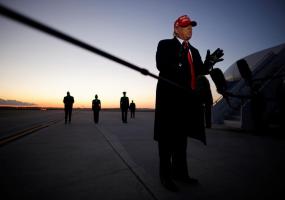Unmanned aerial vehicles will rapidly become important journalistic tools, RISJ workshop is told
23 Oct 2012
Twenty journalists, policy and legal specialists and aerospace technology experts gathered at the Institute on Oct 22 to discuss challenges posed by the use of unmanned aerial vehicles in news gathering.The event was co-sponsored by the Reuters Institute and the Programme in Comparative Media Law and Policy at University of Oxford. "The use of such aerial platforms raises technical, policy, and journalistic issues that need to be comprehended before regular use for news gathering", according to Prof. Robert G. Picard, Director of Research at the Reuters Institute. "Uses of aerial platforms for journalism are not new," he said. "Journalists and photographers ascended in hot air balloons during the 19th century to cover battles and other events. During the 20th century many media used fixed wing aircraft and, later, began using helicopters to cover a wide range of events from above." Participants in the workshop noted that UAVs will change current aerial uses by making newsgathering aircraft much smaller, lowering the costs of acquisition and operation, and allowing more broadcast and print news organizations to employ aerial coverage. Some uses will require less advance notice and planning than traditional flight operations, they agreed. There are many different types of UAVs with different capabilities, endurance, and capacities, technology specialists told attendees at the workshop. News organizations will be able to operate some smaller systems on their own, but more advanced systems with longer ranges and flight times will require contracting with specialist operators—as many news organizations now do with helicopters. Policy experts noted that basic regulation for smaller UAVs are already in place, but that many policy issues for more advanced and longer-range systems are still being determined by many aviation regulators and should be in place in the next three years. Media legal experts attending the event noted that their use raises issues of privacy, control of access to airspace above news events, and liability that will require attention of news organizations. Journalists and legal and technology specialists from the BBC, ABC (Australia), Channel 4, New York Times, and the Drone Journalism Lab discussed current media uses of UAVs, how they see they will be employed in the future, and what operating practicalities must be addressed by news organizations. A report on the issues and challenges involved in news uses of UAVs will be published by RISJ in spring 2013.




